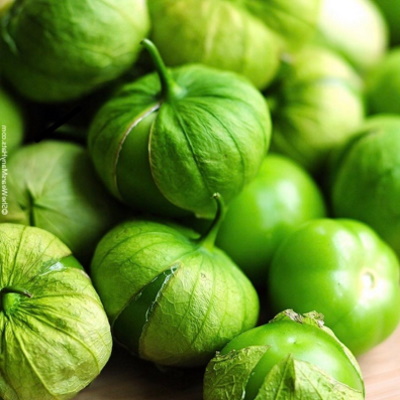-
-
Out of stock
 Perennial flowering plant grows as a compact shrub up to 80-120 cm (30-50 in.) high. Large, single, bright yellow flowers, diameter up to 5 cm (2 in.). Blooms in the second year from July until frost.
Perennial flowering plant grows as a compact shrub up to 80-120 cm (30-50 in.) high. Large, single, bright yellow flowers, diameter up to 5 cm (2 in.). Blooms in the second year from July until frost. -
Out of stock
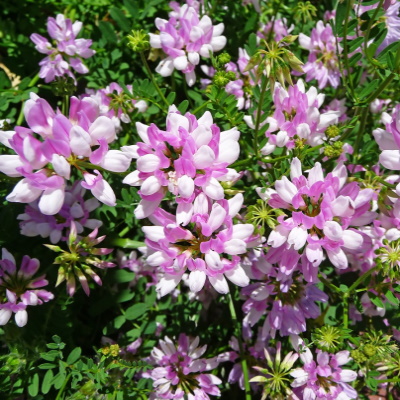 This herbaceous perennial plant is about 40 cm (15 in.) tall, branching occasionally. The hairless stems are more or less ascending, often relying on adjacent vegetation for support. Because the stems are produced in abundance from rhizomes, Crown Vetch often forms a dense layer of leafy vegetation that excludes other plants. Each compound leaf is more or less sessile because its first pair of leaflets occurs near the stem. Tendrils are not produced. From the axils of the upper compound leaves, there develops individual flowering stalks. At the apex of each stalk, there is an umbel of 10-25 flowers.
This herbaceous perennial plant is about 40 cm (15 in.) tall, branching occasionally. The hairless stems are more or less ascending, often relying on adjacent vegetation for support. Because the stems are produced in abundance from rhizomes, Crown Vetch often forms a dense layer of leafy vegetation that excludes other plants. Each compound leaf is more or less sessile because its first pair of leaflets occurs near the stem. Tendrils are not produced. From the axils of the upper compound leaves, there develops individual flowering stalks. At the apex of each stalk, there is an umbel of 10-25 flowers. -
Out of stock
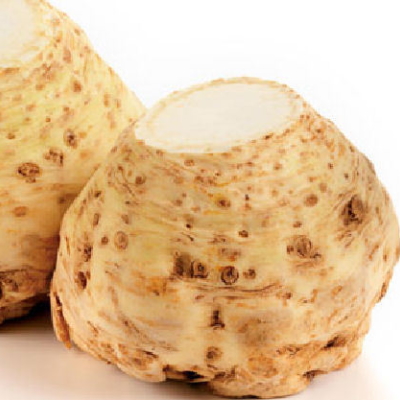 Improved Giant Prague variety. The giant root is excellent for stews and soups. Start 8-12 weeks indoors.
Improved Giant Prague variety. The giant root is excellent for stews and soups. Start 8-12 weeks indoors. -
Out of stock
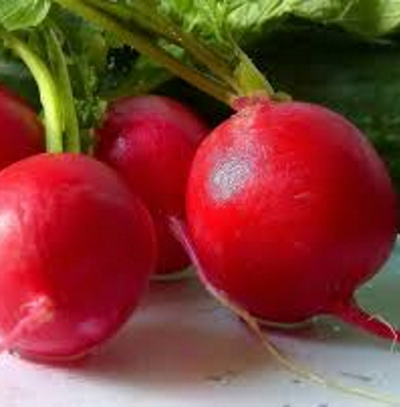 These tasty and fast-growing heirloom radishes are round to globe-shaped and a brilliant cherry- red in color. They are renowned for their juicy, tender-crisp mild flesh and adaptability to a wide variety of conditions. Sow the fast-growing seeds in, wherever you have a little space as they’ll be ready in no time. Enjoy these as fresh snacks and slice into salads. About the size of a small apple, they're great snacks for everyone.
These tasty and fast-growing heirloom radishes are round to globe-shaped and a brilliant cherry- red in color. They are renowned for their juicy, tender-crisp mild flesh and adaptability to a wide variety of conditions. Sow the fast-growing seeds in, wherever you have a little space as they’ll be ready in no time. Enjoy these as fresh snacks and slice into salads. About the size of a small apple, they're great snacks for everyone. -
Out of stock
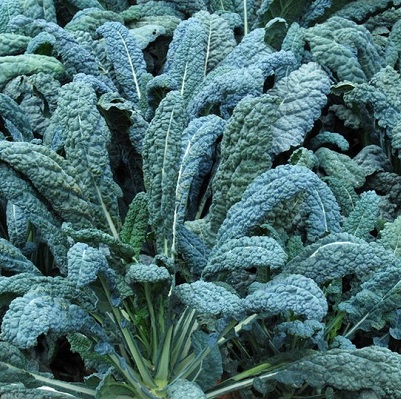 62 days. Brassica oleracea. Open Pollinated. This early variety produces high yields of flavorful blue-green kale leaves. It is sweet and tender. Used fresh in salads, on sandwiches, in soups, or cooked. It is best eaten when leaves are small and tender. The flavour is enhanced by frost! Also known as Dinosaur Kale, Black Majic Kale, Tuscan Kale, Black Cabbage Kale, Black Kale, Black Palm Kale, Cavolo Palmizio Kale, Nero di Toscana Kale, and Tuscan Black Palm Cabbage. Suitable for hydroponics gardening. An excellent choice for home gardens, market growers, and open field production.
62 days. Brassica oleracea. Open Pollinated. This early variety produces high yields of flavorful blue-green kale leaves. It is sweet and tender. Used fresh in salads, on sandwiches, in soups, or cooked. It is best eaten when leaves are small and tender. The flavour is enhanced by frost! Also known as Dinosaur Kale, Black Majic Kale, Tuscan Kale, Black Cabbage Kale, Black Kale, Black Palm Kale, Cavolo Palmizio Kale, Nero di Toscana Kale, and Tuscan Black Palm Cabbage. Suitable for hydroponics gardening. An excellent choice for home gardens, market growers, and open field production. -
Out of stock
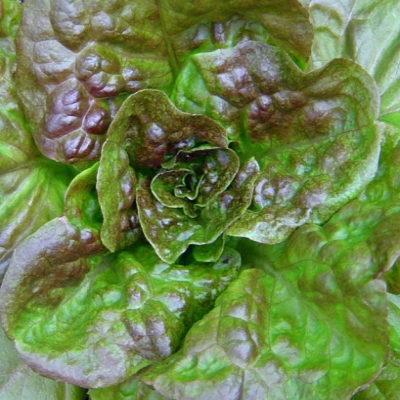 Bronze Mignonette is a Butterhead Heirloom Lettuce Bronze Mignonette is a heat-tolerant and slow to bolt butterhead lettuce variety that has been around for over 100 years. It's bronze leaves are crisp and perfect for salads and sandwiches Frilled green leaves have a bronze tinge with a cream coloured heart. Large heads and tender buttery leaves tipped in red are a rare treat. Plants need plenty of space to reach the full potential of this lettuce so keep plants 45 cm apart. Plant in lots of organic well-drained fertile soil. Harvest early in the morning to obtain the best flavour. Keep soil evenly moist for best growth. Plant every 2 weeks from early spring until August to maintain fresh crop all summer.
Bronze Mignonette is a Butterhead Heirloom Lettuce Bronze Mignonette is a heat-tolerant and slow to bolt butterhead lettuce variety that has been around for over 100 years. It's bronze leaves are crisp and perfect for salads and sandwiches Frilled green leaves have a bronze tinge with a cream coloured heart. Large heads and tender buttery leaves tipped in red are a rare treat. Plants need plenty of space to reach the full potential of this lettuce so keep plants 45 cm apart. Plant in lots of organic well-drained fertile soil. Harvest early in the morning to obtain the best flavour. Keep soil evenly moist for best growth. Plant every 2 weeks from early spring until August to maintain fresh crop all summer. -
Out of stock
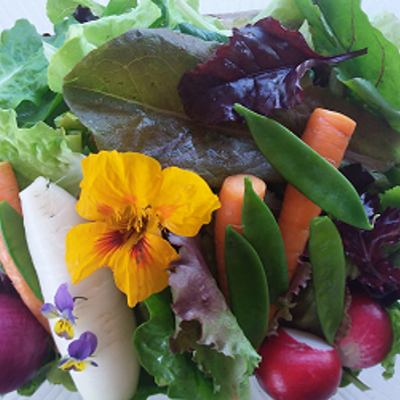
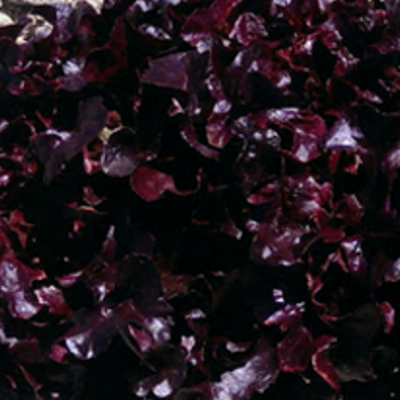 A real standout in both the garden and in your salad bowl. Harvest when leaves are small to add a brilliant colour to spring salads. Outrageous Red is slow to bolt in the summer heat and keeps its mild, non-bitter flavour. The colour fades in hot weather but it stands up well. Sow in early spring and then again in August to have this lively leag lettuce available all summer. Cut leaves 2-3 cm above the stem base to allow the plant to sprout new leaves. If the plant starts to bolt remove the plant as leaves become bitter.
A real standout in both the garden and in your salad bowl. Harvest when leaves are small to add a brilliant colour to spring salads. Outrageous Red is slow to bolt in the summer heat and keeps its mild, non-bitter flavour. The colour fades in hot weather but it stands up well. Sow in early spring and then again in August to have this lively leag lettuce available all summer. Cut leaves 2-3 cm above the stem base to allow the plant to sprout new leaves. If the plant starts to bolt remove the plant as leaves become bitter. -
Out of stock
 There is a very good reason why Red Salad Bowl is among the most popular lettuces. Red Salad Bowl is a variety of looseleaf lettuce with oakleaf type leaves. The deep red and purple leaves are especially tender, with sweet and spicy tones. Red Salad Bowl is best grown during the cooler portions of the growing season in spring or fall, though it is slow to bolt in warmer conditions. The leaves are commonly used in salads. The baby greens can first be harvested approximately 25 days after germinating. Try growing some in containers,
There is a very good reason why Red Salad Bowl is among the most popular lettuces. Red Salad Bowl is a variety of looseleaf lettuce with oakleaf type leaves. The deep red and purple leaves are especially tender, with sweet and spicy tones. Red Salad Bowl is best grown during the cooler portions of the growing season in spring or fall, though it is slow to bolt in warmer conditions. The leaves are commonly used in salads. The baby greens can first be harvested approximately 25 days after germinating. Try growing some in containers, -
-
Out of stock
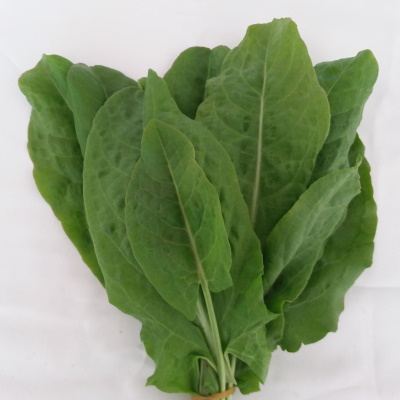
The herbal lemony flavor of sorrel makes a great addition to salads, sauces, or soups. A famed companion to fish. Will produce the most tender leaves in cool weather. Sow in spring or fall. Once established, can be propagated by root division. Hardy in zone 4-8. Perennial.
-
Out of stock
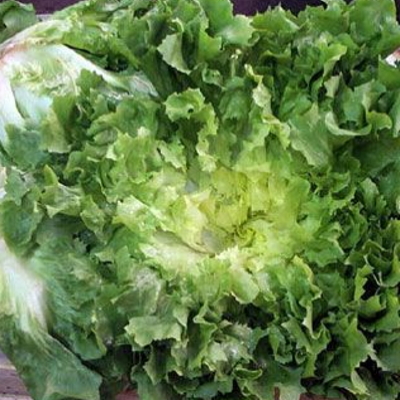 This escarole type of endive has dark green leaves that are broad, coarse and crumpled in appearance but not curly. Popular as an addition to any salad or may be cooked as greens. Harvest as you would lettuce by cutting them just below the lower leaves. They will withstand a touch of frost but not a hard freeze.
This escarole type of endive has dark green leaves that are broad, coarse and crumpled in appearance but not curly. Popular as an addition to any salad or may be cooked as greens. Harvest as you would lettuce by cutting them just below the lower leaves. They will withstand a touch of frost but not a hard freeze. -
Out of stock
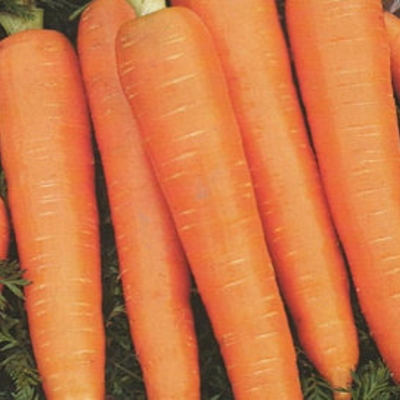 Orange-scarlet roots are smooth, even-shaped, and free from eyes. The meaty carrots are 15 cm long and 2.5 cm thick with a sweet taste. A garden staple that is a good choice for soils that tend to be a little heavier. Chantenay produces crunchy, sweet carrots that are excellent for dicing. Roots grow to be a reddish-orange.
Orange-scarlet roots are smooth, even-shaped, and free from eyes. The meaty carrots are 15 cm long and 2.5 cm thick with a sweet taste. A garden staple that is a good choice for soils that tend to be a little heavier. Chantenay produces crunchy, sweet carrots that are excellent for dicing. Roots grow to be a reddish-orange. -
Out of stock
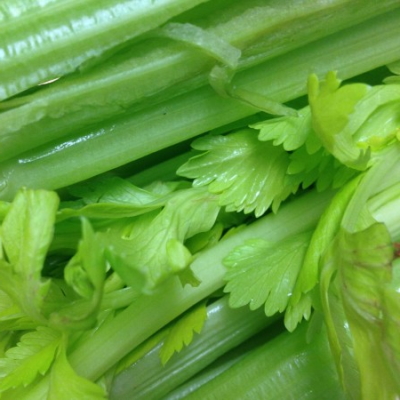 Tall Utah is a disease-resistant variety with large, full hearts with round, smooth ribs. The dark green, stringless stalks are tender, crisp, and tasty. There is no doubt that celery is a demanding vegetable to grow. At the same time, it is a rewarding vegetable to grow for gardeners with skill, determination, and a space to start the seeds indoors. Tall Utah has an early maturity and is resistant to bolting under summer stress. Vigorous plants produce nicely flavoured, crisp stalks. Plants reach a mature height of 45 cm. Stalks can be picked young and enjoyed.
Tall Utah is a disease-resistant variety with large, full hearts with round, smooth ribs. The dark green, stringless stalks are tender, crisp, and tasty. There is no doubt that celery is a demanding vegetable to grow. At the same time, it is a rewarding vegetable to grow for gardeners with skill, determination, and a space to start the seeds indoors. Tall Utah has an early maturity and is resistant to bolting under summer stress. Vigorous plants produce nicely flavoured, crisp stalks. Plants reach a mature height of 45 cm. Stalks can be picked young and enjoyed. -
Out of stock
 A stunningly colored and robust, red celery variety that will become a favourite for its continual harvests of gorgeous, succulent stalks. A range of red shades from burgundy to brilliant red and even blanched to golden pink, all with green foliage. From the breeding talents of Frank Morton who crossed the heirloom, Giant Red with Ventura. Giant red celery is one of Europe's most treasured heirlooms, not only for its striking colour, but its true celery flavour that is prized in soups. Redventure combines the best of both of these celeries. Harvest a stalk at a time for salads. Fully mature plants produce a nice semi-blanched golden-pink heart.
A stunningly colored and robust, red celery variety that will become a favourite for its continual harvests of gorgeous, succulent stalks. A range of red shades from burgundy to brilliant red and even blanched to golden pink, all with green foliage. From the breeding talents of Frank Morton who crossed the heirloom, Giant Red with Ventura. Giant red celery is one of Europe's most treasured heirlooms, not only for its striking colour, but its true celery flavour that is prized in soups. Redventure combines the best of both of these celeries. Harvest a stalk at a time for salads. Fully mature plants produce a nice semi-blanched golden-pink heart. -
Out of stock
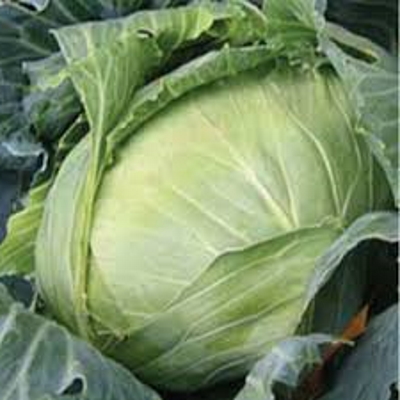 Brunswick is a “Drum Head” cabbage, introduced in Europe in the 1920s, that has long since become a favorite. Brunswick is an extremely versatile cabbage and can be planted virtually throughout the year. Heads weigh 2.7-4.5 kg
Brunswick is a “Drum Head” cabbage, introduced in Europe in the 1920s, that has long since become a favorite. Brunswick is an extremely versatile cabbage and can be planted virtually throughout the year. Heads weigh 2.7-4.5 kg -
Out of stock
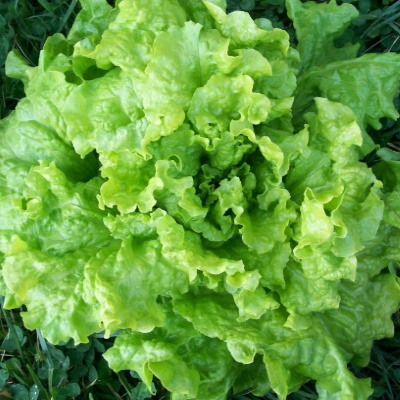 Organic. Very early leaf lettuce. Loose, light green crinkly leaves retain their crisp, tender eating qualities longer than other leaf lettuce varieties. Extra early maturity at approximately 45 days.
Organic. Very early leaf lettuce. Loose, light green crinkly leaves retain their crisp, tender eating qualities longer than other leaf lettuce varieties. Extra early maturity at approximately 45 days. -
Out of stock
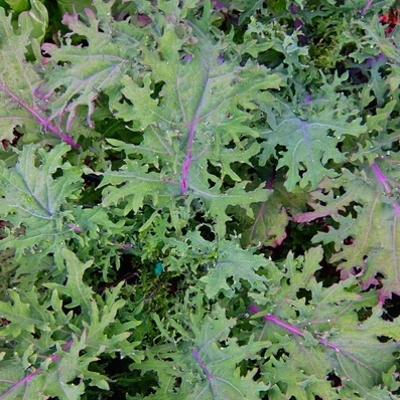 Red Russian Kale Seeds grow leaves that are flat, toothed, grey-green leaves with purple stems and veins really brighten after frosts. Young leaves are tender for salads, the red and purple hues turn a rich, dark green color when cooked. Rich in vitamins and minerals than other greens and disease resistant. If planted early this old-time heirloom kale goes to seed, producing tall towers of yellow flowers followed by edible seed pods. Seed saving is easy with kale, and collect Kale seeds before they drop to prevent unwanted kale for years to come.
Red Russian Kale Seeds grow leaves that are flat, toothed, grey-green leaves with purple stems and veins really brighten after frosts. Young leaves are tender for salads, the red and purple hues turn a rich, dark green color when cooked. Rich in vitamins and minerals than other greens and disease resistant. If planted early this old-time heirloom kale goes to seed, producing tall towers of yellow flowers followed by edible seed pods. Seed saving is easy with kale, and collect Kale seeds before they drop to prevent unwanted kale for years to come. -
Out of stock
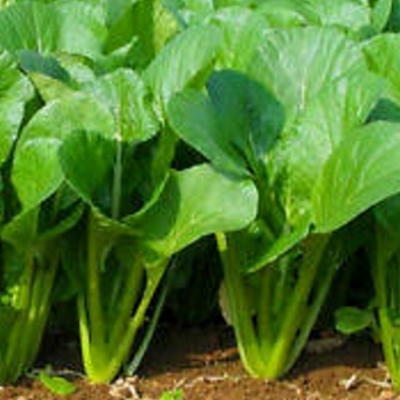
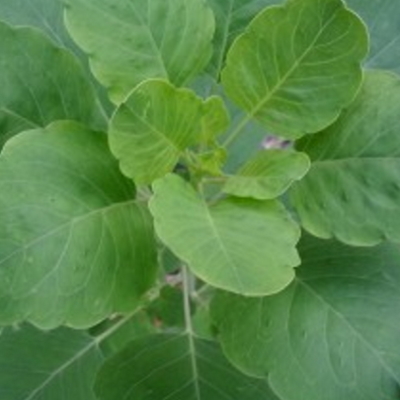
Ethiopian Kale matures in 40 days. Technically, a Mustard, Ethiopian Kale is an unusual leafy green. The hearty leaves have a very complex flavor with overtones of spice and garlic. Great for picking at the baby size in under 3 weeks, or waiting for fully grown leaves. Ethiopian Kale works great makes delicious salad mix, standalone raw, or lightly cooked. An extra cold-tolerant and drought-resistant crop. If you're going to try only one new green this year, Ethiopian Kale should be your first choice.
-
Out of stock
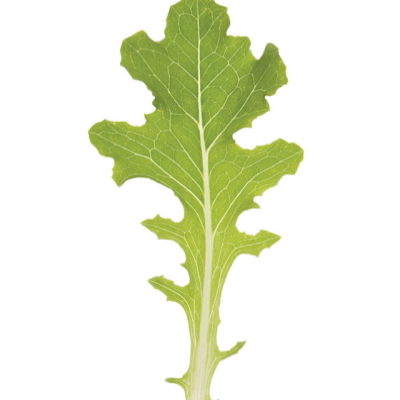 The unique and varied oak style leaf of Bolsachica Organic adds loft and character to baby leaf salad mixes. The leaves are medium to dark green and a bit thicker than others. They grow almost straight upright which makes baby leaf harvesting much easier. Grow this baby leaf lettuce in trays or containers. Cut outside leaves and let inside leaves for future harvests.
The unique and varied oak style leaf of Bolsachica Organic adds loft and character to baby leaf salad mixes. The leaves are medium to dark green and a bit thicker than others. They grow almost straight upright which makes baby leaf harvesting much easier. Grow this baby leaf lettuce in trays or containers. Cut outside leaves and let inside leaves for future harvests. -
Out of stock
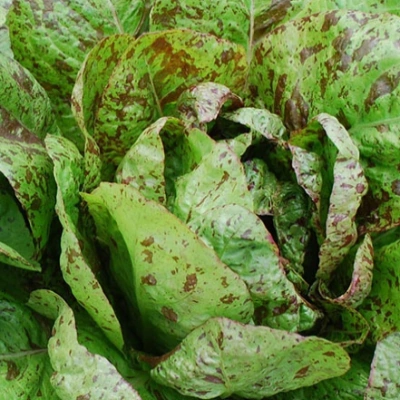 Such a great looking and flavoured Romaine lettuce to have in your garden and in for a salad. The maroon freckles stand out on the glossy green leaves.
Such a great looking and flavoured Romaine lettuce to have in your garden and in for a salad. The maroon freckles stand out on the glossy green leaves. -
Out of stock
 A much-loved heirloom cabbage with solidly tight, conical, folded heads 13-18cm in diameter, and 26-39cm tall. Planted individually, Early Jersey Wakefield cabbage seeds will form a plant up to 1m in diameter. This cabbage has smooth, thick green leaves that are perfect for coleslaw. They can be harvested in summer or overwintered, and they resist splitting in wet weather. Early Jersey Wakefield cabbage seeds were first grown in the U.S. by Francis Brill of Jersey City in 1840.
A much-loved heirloom cabbage with solidly tight, conical, folded heads 13-18cm in diameter, and 26-39cm tall. Planted individually, Early Jersey Wakefield cabbage seeds will form a plant up to 1m in diameter. This cabbage has smooth, thick green leaves that are perfect for coleslaw. They can be harvested in summer or overwintered, and they resist splitting in wet weather. Early Jersey Wakefield cabbage seeds were first grown in the U.S. by Francis Brill of Jersey City in 1840. -
Out of stock
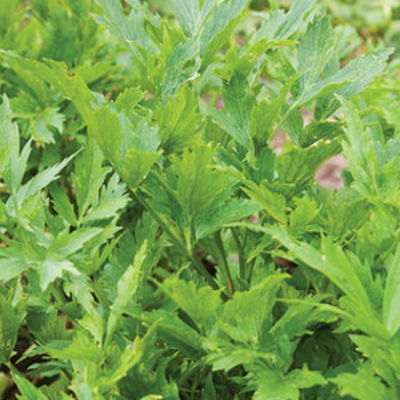
Specialty culinary herb. Young leaves taste like celery and are used in spring salads and with potato, rice, and poultry dishes. Roots and young stems are also edible. Young stems can be cut, peeled, and used in salads. Stems are smooth, hollow, and thick. Attracts Beneficial Insects: If allowed to flower, provides pollen and nectar for beneficial insects such as bees, hoverflies, lacewing larva, lady beetles, parasitic wasps, and tachinid flies.
-
Out of stock
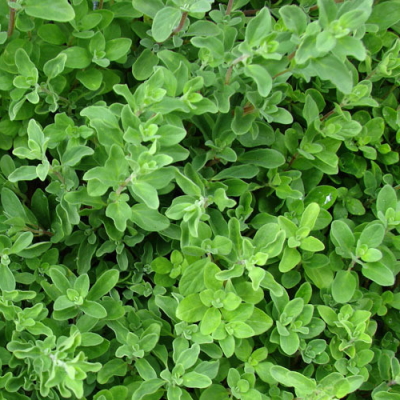 The attractive leaves of this tender perennial, which survives well in both an indoor and outdoor environment are delightfully sweet. They are slightly spicy tasting which is perfect for all meats, fish, and poultry. The pale pink flowers can be used in salads.
The attractive leaves of this tender perennial, which survives well in both an indoor and outdoor environment are delightfully sweet. They are slightly spicy tasting which is perfect for all meats, fish, and poultry. The pale pink flowers can be used in salads. -
Out of stock
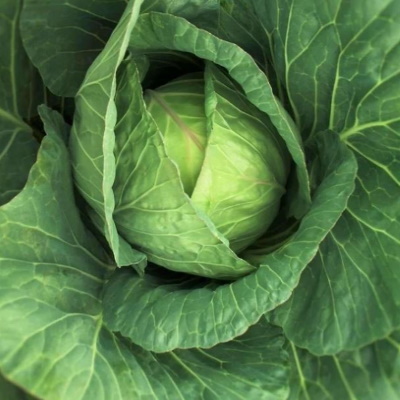 Danish Ballhead cabbage seeds produce heirloom cabbages that are mild and tender. This is a great, general-purpose cabbage that is good for sauerkraut, coleslaw, or general cooking. Big 8-25cm, light-green, well-protected heads stand happily in the garden well into the winter. Danish Ballhead was first introduced in 1887, and has remained a favourite ever since.
Danish Ballhead cabbage seeds produce heirloom cabbages that are mild and tender. This is a great, general-purpose cabbage that is good for sauerkraut, coleslaw, or general cooking. Big 8-25cm, light-green, well-protected heads stand happily in the garden well into the winter. Danish Ballhead was first introduced in 1887, and has remained a favourite ever since. -
Out of stock
 Heirloom Carrots are some of the premier baby carrots available. Bright orange, these heirloom carrots grow about 9 cm long. Each sweet carrot is crisp with a tender core. Their small size lets them grow well in containers, as well as out in the garden. Little fingers are a Nantes type of carrot. Bred in France, they develop their characteristic orange colour earlier than other varieties, these carrots can be harvested early at 8-9cm. Don't let them stay in the ground beyond around 68 days from sprouting or they begin to lose their unique gourmet flavour and texture.
Heirloom Carrots are some of the premier baby carrots available. Bright orange, these heirloom carrots grow about 9 cm long. Each sweet carrot is crisp with a tender core. Their small size lets them grow well in containers, as well as out in the garden. Little fingers are a Nantes type of carrot. Bred in France, they develop their characteristic orange colour earlier than other varieties, these carrots can be harvested early at 8-9cm. Don't let them stay in the ground beyond around 68 days from sprouting or they begin to lose their unique gourmet flavour and texture. -
Out of stock
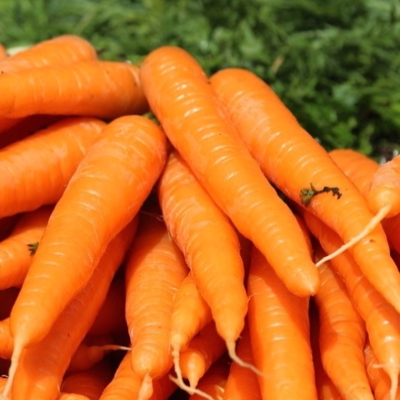 Tendersweet has long, 22-25 cm tapered roots being 5 cm at the shoulder; rich orange color; sweet, and coreless. This heirloom carrot is a reliable producer that has been pleasing folks for generations. Tendersweet carrot is one of the finest varieties, always sweet, tender, and crunchy, and uniformly tapered to a semi-blunt end. The flesh of this carrot is rich orange with an indistinct core.
Tendersweet has long, 22-25 cm tapered roots being 5 cm at the shoulder; rich orange color; sweet, and coreless. This heirloom carrot is a reliable producer that has been pleasing folks for generations. Tendersweet carrot is one of the finest varieties, always sweet, tender, and crunchy, and uniformly tapered to a semi-blunt end. The flesh of this carrot is rich orange with an indistinct core. -
Out of stock
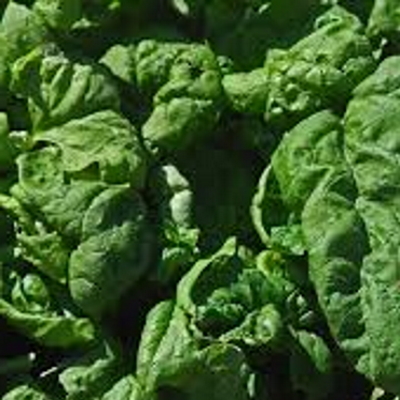 An open-pollinated French heirloom, dating back to the 1800s, Viroflay spinach is known for its huge leaves that can grow up to 20 cm long. Try using young leaves for fresh eating and let them grow for harvesting and freezing. The leaves maintain a fine flavour regardless of whether you harvest them at full size or as baby spinach. Grows quickly and does especially well in the fall/winter garden. Sow in August for fall crop, cover with frost cloth and have the earliest spring spinach.
An open-pollinated French heirloom, dating back to the 1800s, Viroflay spinach is known for its huge leaves that can grow up to 20 cm long. Try using young leaves for fresh eating and let them grow for harvesting and freezing. The leaves maintain a fine flavour regardless of whether you harvest them at full size or as baby spinach. Grows quickly and does especially well in the fall/winter garden. Sow in August for fall crop, cover with frost cloth and have the earliest spring spinach. -
Out of stock
 Wildfire Arugula was bred to be distinctive both in its flavour profile and its leaf shape. The flavour is hot and peppery; the leaves are less uniform than standard arugula. It grows quickly so plant it 15 cm apart to enjoy a cut and come again crop. Its bright green, slightly serrated leaves grow upright instead of spreading out on the ground making it easier to cut.
Wildfire Arugula was bred to be distinctive both in its flavour profile and its leaf shape. The flavour is hot and peppery; the leaves are less uniform than standard arugula. It grows quickly so plant it 15 cm apart to enjoy a cut and come again crop. Its bright green, slightly serrated leaves grow upright instead of spreading out on the ground making it easier to cut. -
Out of stock
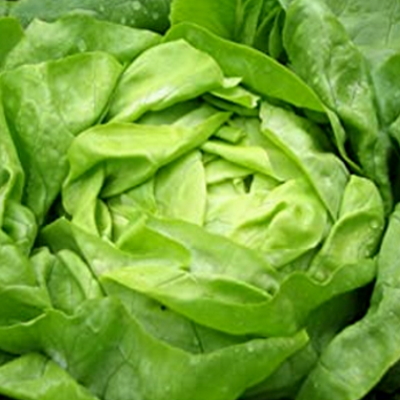 Buttercrunch is a real winner and always a favorite in our organic gardens. This is a butterhead type of lettuce with crisp, thick well-formed medium to dark green outer leaves which hides the buttery yellow-white heart. Buttercrunch has good resistance to bolting. For ultimate flavour and nutrition eat directly after picking. We found that all lettuce, especially our buttercrunch grows in moist rich organic compost. Spring lettuce is grown in sunny locations, while summer crops prefer light shade. Since lettuce is a cool-weather crop, sow the seed as soon as the soil can be worked in the spring then every two weeks thereafter to ensure a continuous supply. Sow seed about 3 mm deep. Head lettuce such as Buttercrunch should be thinned to 30 cm apart to provide ample nutrients and room for growth. An even supply of moisture during the entire growth period is imperative for success. Harvest head lettuce by cutting the head off at the base just below the lower leaves.
Buttercrunch is a real winner and always a favorite in our organic gardens. This is a butterhead type of lettuce with crisp, thick well-formed medium to dark green outer leaves which hides the buttery yellow-white heart. Buttercrunch has good resistance to bolting. For ultimate flavour and nutrition eat directly after picking. We found that all lettuce, especially our buttercrunch grows in moist rich organic compost. Spring lettuce is grown in sunny locations, while summer crops prefer light shade. Since lettuce is a cool-weather crop, sow the seed as soon as the soil can be worked in the spring then every two weeks thereafter to ensure a continuous supply. Sow seed about 3 mm deep. Head lettuce such as Buttercrunch should be thinned to 30 cm apart to provide ample nutrients and room for growth. An even supply of moisture during the entire growth period is imperative for success. Harvest head lettuce by cutting the head off at the base just below the lower leaves. -
Out of stock
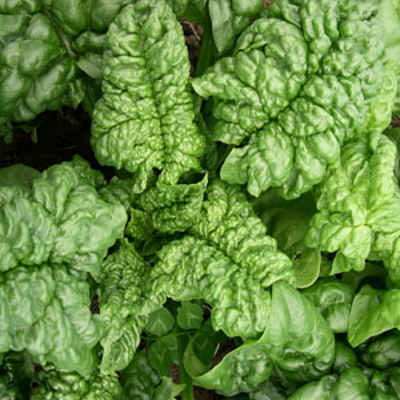 This traditional heirloom spinach has thick, succulent, dark-green savoyed (crumpled leaves) that are very sweet in salads or cooked. It is best planted in early spring and fall. If fall-planted, it will overwinter and produce much earlier than if it is spring-planted. Planted in a row tunnel in fall and you can expect baby spinach in late April to mid-May. If you have never grown spinach before the taste and freshness will win you over. Pick individual leaves from the outer edges of the plant as they become big enough to use, or cut the whole plant 2.5 cm above the ground, and new leaves will be produced. Harvest before the plant sends up a flower stalk. The secret to great spinach is to thin seedlings to 6-10 cm apart.
This traditional heirloom spinach has thick, succulent, dark-green savoyed (crumpled leaves) that are very sweet in salads or cooked. It is best planted in early spring and fall. If fall-planted, it will overwinter and produce much earlier than if it is spring-planted. Planted in a row tunnel in fall and you can expect baby spinach in late April to mid-May. If you have never grown spinach before the taste and freshness will win you over. Pick individual leaves from the outer edges of the plant as they become big enough to use, or cut the whole plant 2.5 cm above the ground, and new leaves will be produced. Harvest before the plant sends up a flower stalk. The secret to great spinach is to thin seedlings to 6-10 cm apart. -
Out of stock
 Snowball is a well-established cauliflower. Very early, dwarf compact plants produce a good size head; can be forced. Extremely reliable. Uniformly shaped, snow white heads that are thick and solid with tight curds. Good for both early and late season crops. Introduced in 1888, Early Snowball is somewhat self-blanching which means the large outer leaves tend to curl around the white head protecting it from the elements. Many growers will still tie the leaves up and around the head to protect it. Best grown during cooler portions of the growing season. Sow the snowball cauliflower seeds in compost in a seed tray or in small pots January-February under glass for July-August harvest. End of March-May outside in a seedbed, about 1 cm deep, or September-October in cold frames to overwinter. When seedlings are large enough to handle, plant them individually, keep them inside until they have 4-6 leaves. Plant outside, spacing 40- 35 cm apart, in well-drained soil, make sure you water the plants in sunny spells, protect from birds and slugs.
Snowball is a well-established cauliflower. Very early, dwarf compact plants produce a good size head; can be forced. Extremely reliable. Uniformly shaped, snow white heads that are thick and solid with tight curds. Good for both early and late season crops. Introduced in 1888, Early Snowball is somewhat self-blanching which means the large outer leaves tend to curl around the white head protecting it from the elements. Many growers will still tie the leaves up and around the head to protect it. Best grown during cooler portions of the growing season. Sow the snowball cauliflower seeds in compost in a seed tray or in small pots January-February under glass for July-August harvest. End of March-May outside in a seedbed, about 1 cm deep, or September-October in cold frames to overwinter. When seedlings are large enough to handle, plant them individually, keep them inside until they have 4-6 leaves. Plant outside, spacing 40- 35 cm apart, in well-drained soil, make sure you water the plants in sunny spells, protect from birds and slugs. -
Out of stock
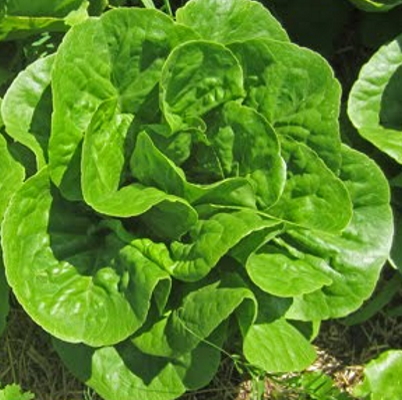 Winter Density is an early, small compact romaine. Its dark green leaves with an upright growth habit build a 20 cm tall densely packed head. You can count on Winter Density to be delectable butterhead/romaine cross is frost tolerant. Since it is bolt resistant and suited to all sowing dates and a great variety for spring, summer, and fall production. Perfect size for small families. Pick small outside leaves or harvest the whole head.
Winter Density is an early, small compact romaine. Its dark green leaves with an upright growth habit build a 20 cm tall densely packed head. You can count on Winter Density to be delectable butterhead/romaine cross is frost tolerant. Since it is bolt resistant and suited to all sowing dates and a great variety for spring, summer, and fall production. Perfect size for small families. Pick small outside leaves or harvest the whole head. -
Out of stock
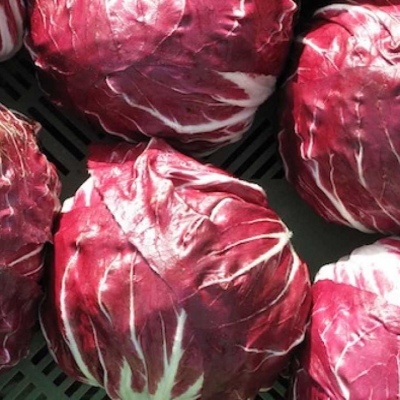 Although this is called a challenging crop to grow, it is not quite so challenging in the Calgary climate. It does take a bit more work but the use of the young leaves then heads later makes the work more than worthwhile. The young fresh heads are a visual delight for the eyes and a culinary treat for the taste buds! A spreading, leafy plant producing open, round heads 5-10 cm in diameter. Beautiful dark red leaves that withstand considerable frost. Follow our planting instructions for our foolproof method of growing great Radicchio. A cold frame or a basement is all that's needed to enjoy these culinary delights.
Although this is called a challenging crop to grow, it is not quite so challenging in the Calgary climate. It does take a bit more work but the use of the young leaves then heads later makes the work more than worthwhile. The young fresh heads are a visual delight for the eyes and a culinary treat for the taste buds! A spreading, leafy plant producing open, round heads 5-10 cm in diameter. Beautiful dark red leaves that withstand considerable frost. Follow our planting instructions for our foolproof method of growing great Radicchio. A cold frame or a basement is all that's needed to enjoy these culinary delights. -
Out of stock
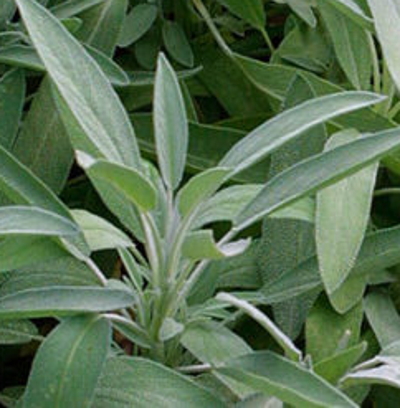
A staple of the herb garden. Dusty, green leaves are used in dressing, sauces, salted herbs, sausage, and tea. Make a good base for dried floral wreaths. Also known as garden sage. Perennial in Zones 4-8.
-
Out of stock
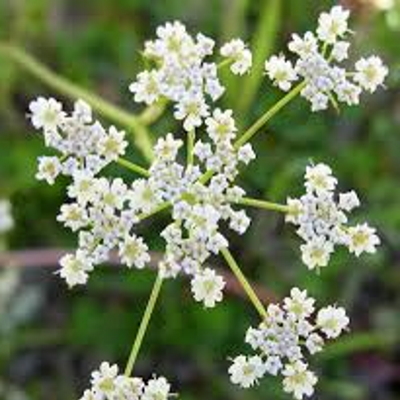 Caraway reveals its close family ties to carrot through its carrot-like, feathery foliage, and the long taproot it develops in the first year. Like the carrot (also a biennial), the plant stores energy in this root to send up a tall flower stalk in year two, which is followed by seeds for the next generation. Use the sweet foliage to flavour soups and salads, use the seeds to flavour bread and baked goods, and even use the carrot-like taproot as a regular root vegetable.
Caraway reveals its close family ties to carrot through its carrot-like, feathery foliage, and the long taproot it develops in the first year. Like the carrot (also a biennial), the plant stores energy in this root to send up a tall flower stalk in year two, which is followed by seeds for the next generation. Use the sweet foliage to flavour soups and salads, use the seeds to flavour bread and baked goods, and even use the carrot-like taproot as a regular root vegetable.
